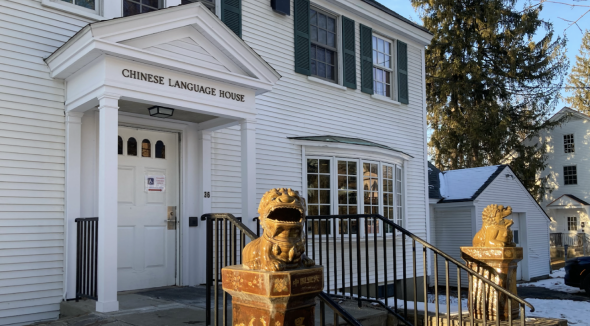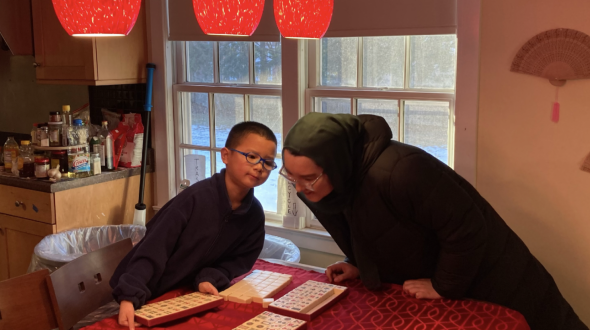
A Spot of Tea, Please
Last week I visited the Chinese Language House (CLH) with a few of my CHIN 22 classmates, for their weekly Chinese tea. CLH is one of the many Living Learning Communities (LLCs) on campus, housing based on a shared identity and/or interest. For students who are interested in learning about Chinese language and culture, the CLH might be a great place to consider dorming. There are a couple of LLCs focused on language learning, and one thing they all have in common is that you may only speak the target language within the house. That way, the CLH offers students ample space to practice and immerse themselves in learning Chinese.

After coming back from winterim (Dartmouth lingo for winter break), I realized something I really missed during my fall term was speaking Chinese and feeling immersed in my cultural background. In my last term, I found that finding cultural belonging is largely a student-run process. There is identity-based programming from OPAL, the Office of Pluralism and Leadership, mostly focused on larger cultural celebrations such as Asian American Pacific Islander History Month, Caribbean Carnival, and Black Legacy Month, which occur later in the academic year. But day-to-day culture-based community largely centers on personal friendships or student-run clubs.
This makes CLH's Friday tea time particularly special, as it is run by the CLH's Live-in Advisor, usually an exchange professor from Beijing Normal University in Beijing, China. The current Live-in Advisor, Professor Yin, is also my professor for CHIN 22: Intermediate Modern Chinese (Second-year level).

After shrugging off our winter coats, we stepped inside the living room and were met with a warm atmosphere, lively conversation, and repeated snack offerings. It was a great opportunity to reconnect with friends post-winterim, meet new people, and practice my Chinese speaking. Something totally unexpected was Professor Yin's son teaching us how to play Mahjong! Mahjong is a 4-player tile-based game, where the goal is to build a hand of pairs, sequences, and/or triples before anyone else. As inexperienced players, Iman '28 and I played one hand together, versus Professor Yin's son, and two upper level students. Between bites of seaweed snacks and sips of tea, Iman and I managed to win one round out of the six we played.

As someone who grew up in a predominantly Asian neighborhood, finding cultural belonging was something important to me in my college search. While a sense of community is hard to convey through a form of writing like a blog post, I hope this can serve as an introduction to ways to think about finding and building a community that fits your needs. Don't be shy attending an event for the first time. Bring a friend, take the leap, and you'll find your spot on campus soon. Personally, Friday Chinese tea will be something I'll be looking forward to every week from now on—maybe I'll see you there!

















